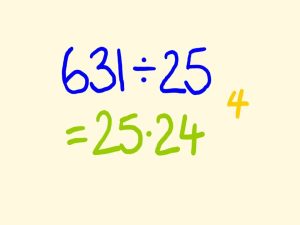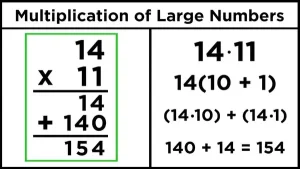Math can often feel like a mountain to climb, filled with complex equations and tricky concepts. Yet, it doesn’t have to be daunting. Understanding math opens doors to countless opportunities in everyday life and future careers. Whether you’re a student grappling with fractions or an adult wanting to brush up on your skills, there are countless tips and tricks that make learning easier. Dive into this treasure trove of strategies designed for students of all ages. Let’s transform the way you approach math!
Math Made Easy: Essential Tips and Tricks for Students of All Ages
Math doesn’t have to be overwhelming. With the right strategies, anyone can conquer numbers with confidence. From playful techniques for kids to practical tricks for adults, these math tips & tricks simplify complex concepts and make learning enjoyable. Embrace a new way of thinking about math that enhances your skills while keeping it fun and engaging.
Toolkits for Math Success
Creating a toolkit for math success can transform your learning experience. Include essential resources like calculators, graph paper, and math apps. Gather reference books that explain concepts clearly. A dedicated study space with minimal distractions is vital. Use colorful markers or highlighters to annotate notes, making them visually engaging and easier to review later on.
Tricks for Quick Calculation
Quick calculations can save time and reduce stress. Using rounding techniques helps simplify complex numbers. For instance, add or subtract to the nearest ten before adjusting your answer. Familiarize yourself with common math patterns, like the rules for multiplying by 9 or dividing by 5, to accelerate your mental math skills effortlessly throughout everyday tasks.
Adding Large Numbers
Adding large numbers can feel overwhelming. Break them into smaller parts for easier calculations. Start with the highest place value and work your way down. For example, add hundreds first, then tens, and finally units. This method simplifies the process and reduces errors, making it more manageable to tackle those big sums confidently.
Subtracting from 1,000
When subtracting from 1,000, think of it as a simple trick. Instead of doing the math directly, just take the number you’re subtracting and find its complement to 1,000. For example, if you’re subtracting 345: calculate 1000 – 345 = 655. This method simplifies calculations and boosts your confidence with numbers!
Multiplying by 5
Multiplying by 5 is simple and quick. Just take half of the number you want to multiply, then add a zero at the end. For example, for 6 times 5, divide 6 by 2 to get 3, and stick a zero on it—making it 30. Easy as pie! Try practicing this method with various numbers.
Division Made Easy
Division can seem daunting, but it doesn’t have to be! Start by understanding that dividing by 2 is simply halving a number. For larger numbers, break them down into smaller parts. Use estimation to find close answers quickly. Practicing with real-life examples makes division less intimidating and boosts your confidence in tackling math problems head-on.
Multiplying by 9
Multiplying by 9 can be simple with a neat trick. Just take the number you’re multiplying and subtract one from it. That gives you the first digit of your answer. The second digit is what remains to make nine when added to that first digit. For example, 9 x 3 = 27: (3-1=2) and (9-2=7).
Tricks for Multiplying by 10 and 11
Multiplying by 10 is simple: just add a zero to the end of your number. For example, 6 x 10 becomes 60. With multiplying by 11, there’s an easy trick too! Take any two-digit number, say 23; add its digits (2 + 3 = 5) and place that sum in between them for the answer: 253.
Mastering Percentages
Mastering percentages can seem daunting, but it doesn’t have to be. Start by understanding that a percentage is simply a fraction of 100. Use real-life examples like discounts or test scores to practice. Break down complex problems into smaller parts and remember the formula: Percent = (Part/Whole) x 100. Practice makes perfect!
Quick Squaring Techniques
Quick squaring techniques can simplify calculations significantly. For numbers ending in 5, just square the first digit and add one to it. Then, append 25. For example, \(35^2 = (3)(4)25 = 1225\). Another method involves using nearby perfect squares and adjusting based on differences. These shortcuts make squaring a breeze!
Handling Tough Multiplication
Tough multiplication can be daunting, but breaking it down helps. Instead of multiplying large numbers directly, split them into smaller parts. For instance, to multiply 23 by 47, calculate (20 x 40) + (3 x 40) + (20 x 7) + (3 x 7). This method simplifies the process and builds confidence in tackling challenging problems.
Multiplying Numbers Ending in Zero
Multiplying numbers that end in zero is straightforward. Simply ignore the zeros at first and multiply the non-zero parts. Then, add back the zeros from both numbers to your final answer. For example, 30 x 20 becomes 3 x 2, which equals 6; then you add two zeros for a final product of 600.
Enhancing Math Skills
Enhancing math skills requires consistent practice and curiosity. Engage with puzzles, games, or apps that challenge your logic. Explore different strategies for solving problems to find what works best for you. Join study groups or online forums to share ideas and learn from others. A positive mindset can transform how you approach math challenges daily.
Turn Math into Playtime
Transforming math into playtime can ignite excitement in learning. Use games like card matches or board games to teach concepts subtly. Incorporate math puzzles and challenges for a fun twist. Engage with apps that turn calculations into interactive adventures, making numbers come alive and fostering an enjoyable atmosphere where students thrive while playing.
The Rule of 6s and 5s
The Rule of 6s and 5s simplifies multiplication. When multiplying by 6, double the number and add the original to it. For example, \(6 \times 4\) becomes \(2 \times 4 + 4 = 24\). With 5, simply halve the number and append a zero for even numbers or add five for odd ones. Quick and effective!
Using Fingers for Multiplication
Using fingers for multiplication is a fun and practical approach. For example, to multiply numbers 6 through 10, simply use your hands. Hold out both hands, bend down the finger representing the first number and count the remaining fingers on one hand for tens. Count up the bent finger’s position for units. It’s simple and effective!
Memorizing Key Math Concepts
Memorizing key math concepts can boost your confidence. Start with the basics, like addition and subtraction facts. Use flashcards for quick review or apps that make learning interactive. Visual aids, such as charts and diagrams, help reinforce understanding. Repetition is essential—practice consistently to enhance retention and transform complex ideas into second nature over time.
Divisibility Rules
Divisibility rules simplify checking if a number can be divided by another without leaving a remainder. For instance, if a number ends in 0 or 5, it’s divisible by 5. If the sum of its digits is divisible by 3, so is the original number. These tricks save time and boost confidence!
Speedy Comparison of Fractions
Comparing fractions can be quick and easy. Start by finding a common denominator or converting them to decimals. If you prefer, cross-multiply for a fast comparison. Just remember, the larger the numerator in relation to the denominator, the bigger the fraction. Practice this method, and you’ll speed through comparing fractions like a pro!
Practice and Application
Practice is essential for mastering math tips and tricks. Incorporate these techniques into daily routines, whether through worksheets or fun online games. Real-life applications can reinforce concepts too. Try calculating discounts while shopping or figuring out travel times. The more you apply what you’ve learned, the more confident you’ll become in your abilities.
Implementing Mental Math Strategies
Mental math strategies can simplify calculations and boost confidence. Start with small numbers to build your skills. Practice rounding numbers to make them easier to work with. Use visualization techniques, like imagining number lines or using objects as counters. Frequent practice will sharpen your mind and help you tackle larger problems effortlessly over time.
Making Math Fun and Engaging
Math can be exciting with the right approach. Use games, puzzles, and real-life scenarios to spark interest. Incorporate technology through math apps or online challenges. Create a friendly competition among friends or family for added motivation. By turning lessons into interactive experiences, students will naturally engage more deeply and enjoy their learning journey in math.
Applying Math Tricks in Real Life
Math tricks can be incredibly useful in daily life. Whether you’re calculating tips at a restaurant or figuring out discounts while shopping, these shortcuts save time and reduce stress. By applying simple techniques, you’ll navigate numbers with confidence. Embrace math as part of your routine, making everyday calculations easier and more enjoyable.
Sharpening Mental Calculation Skills
Sharpening your mental calculation skills can be a game changer. Regular practice with simple exercises, like quick addition or subtraction, enhances speed and accuracy. Challenge yourself with timed quizzes or playful math games. Use everyday situations—like grocery shopping—to practice calculations in real time. The more you engage your brain, the sharper it becomes!
Taking Math Practice to the Next Level
To elevate your math skills further, consistent practice is key. Explore advanced exercises and puzzles beyond typical homework. Resources like online platforms or apps can provide interactive ways to challenge yourself.
Join a study group or find a math buddy for collaborative learning. Sharing tips and tricks encourages creativity in problem-solving.
Set achievable goals each week and track your progress. Celebrate small victories to maintain motivation along the journey.
As you immerse yourself in these strategies, watch as your mathematical confidence flourishes! Math doesn’t have to be daunting—embrace it with enthusiasm and curiosity.




